Osiris: Enigmatic And Powerful God In Ancient Egypt
A. Sutherland - AncientPages.com - Unquestionably, Osiris was one of the most important deities in ancient Egypt. Osiris was a god of death, resurrection, and fertility. His origin and the meaning of his name remain enigmatic. Also, the direct association of Osiris with agriculture and fertility is believed to have occurred later.
Facsimile of a vignette from the Book of the Dead of Ani. The deceased Ani kneels before Osiris, judge of the dead. Behind Osiris stand his sisters Isis and Nephthys, and in front of him is a lotus on which stand the four sons of Horus. Published by James Wasserman; facsimile made by E. A. Wallis Budge; original artist unknown. Public Domain
According to the “Pyramid Texts”, Osiris was one of the three most important and frequently mentioned deities, along with Horus and Re.
There are many versions of Osiris’ myth. Our main authority for the legend of Osiris is Plutarch of Chaeronea who was the most influential ancient philosopher and his work "De Iside et Osiride" (“Concerning Isis and Osiris”). However, the whole story is not to be found in Egyptian texts, though these confirm the accounts given by the Greek writers.
Osiris' "symbols were crook and flail, djed, bull, throne, and phoenix. Nut and Geb gave birth to Osiris first. Then he became a brother to Isis, Seth, and Nephthys. Osiris chose to be married to his sibling, Isis. He went on to father Anubis and Horus. Some stories insinuate that Nephthys (mother of Anubis) took the form of Isis to seduce Osiris. Later, she became pregnant with Anubis. 1
In Plutarch's story of Osiris and Isis, it is claimed that Osiris, once ruled Egypt until he was murdered by his jealous brother Seth who wanted Osiris‘ throne. The body of Osiris was dismembered and scattered across the land but Isis and her sister Nephthys (also Seth’s wife) found Osiris.
The gods Osiris, Anubis, and Horus. Wall painting in the tomb of Horemheb (KV57). Image credit: A. Parrot - CC BY 2.0
Isis briefly brought Osiris back to life for a short period of time, so he could help her to be pregnant. Thus Horus, Osiris’ son, and rightful heir was born. Osiris became the god of the underworld.
Osiris and other gods
Osiris was associated with the god Andjety of Busiris, an earthly ruler who was resurrected, and interestingly, his insignia were the same as those used by Osiris. He also took the title"foremost of the westerners" from the ancient jackal god Khenty-imentiu of Abydos and from Anubis, he took the title "he who is the god's tent". Osiris was also identified with Soker, an ancient Memphite god of the dead.
The “ba” (or soul) of Osiris was believed to reside in the sacred ram Ba-neb-djedet, an ancient Egyptian god of Lower Egypt worshiped at Mendes and the Apis bull, (usually associated with god Ptah) was later a manifestation of Osiris and so it continued.
The god Osiris became a more and more important figure in the Egyptian pantheon. Various titles, which were applied to him, largely contributed to his greatness. He became almost as powerful as that of god Ra. Ra was lord of heavens and Osiris was lord of the underworld. Gradually the cult of Osiris spread throughout Egypt and the god’s personality assimilated other deities and their attributes. His main cult center was in Abydos and Heliopolis.
When Ptolemy I Soter, a Macedonian general of Alexander the Great became ruler of Egypt (323–285 BC) and founder of the Ptolemaic dynasty, he introduced the hybrid, Serapis. Clement of Alexandria, (c. 150 – c. 215), a Christian theologian who taught at the Catechetical School of Alexandria believed that Serapis was a combination of Osiris and Apis, the bull god that was worshiped in Memphis. The cult of Osiris/Apis was very popular among the Macedonians, who at Ptolemy’s direction had renamed it – Serapis.
Worship and view of Osiris; the Chapel of Osiris at Abydos Temple. Image credit: Amice M.Calverley, Alan Gardiner - CC BY-SA 3.0
Osiris was usually depicted in form of a human mummy with white skin that probably symbolizes the mummy wrappings. Another depiction portrays the god with black skin as the color of the deities of the underworld. Osiris was sometimes depicted wearing other crowns having complex forms, but the White crown of Upper Egypt or the Atef crown (the white crown with ostrich feathers on each side and a disc at the top) are most frequently seen.
His hands are crossed on his breast, one hand holding a flail, and the other, crook. Both are Osiris’ chief attributes. Other decorations of his body are bracelets worn at the wrist and a broad collar.
The Cult of Osiris grew by its own power and remained powerful throughout most of Egyptian history. It also spread beyond the borders of Egypt. The Greeks associated Osiris with their own god Dionysos.
Written by – A. Sutherland - AncientPages.com Senior Staff Writer
Copyright © AncientPages.com All rights reserved. This material may not be published, broadcast, rewritten or redistributed in whole or part without the express written permission of AncientPages.com
Expand for referencesReferences:
Roger Lancelyn Green, Tales of Ancient Egypt
Pollitt J. J. Art in the Hellenistic Age
Saunders N. J. Alexander's Tomb: The Two-Thousand Year Obsession to Find the Lost Conquerer
More From Ancient Pages
-
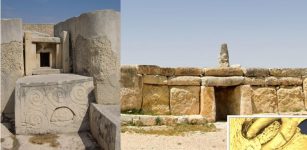 First People To Inhabit Malta Arrived 700 Years Earlier Than Previously Thought
Archaeology | Mar 20, 2018
First People To Inhabit Malta Arrived 700 Years Earlier Than Previously Thought
Archaeology | Mar 20, 2018 -
 Hulagu Khan Destroyed Thousands Of Priceless Ancient Books Kept In The House Of Wisdom In Baghdad
Ancient History Facts | Jun 21, 2018
Hulagu Khan Destroyed Thousands Of Priceless Ancient Books Kept In The House Of Wisdom In Baghdad
Ancient History Facts | Jun 21, 2018 -
 Mysterious Disappearance Of King Aegeus Of Athens After His Wedding
Featured Stories | Aug 1, 2022
Mysterious Disappearance Of King Aegeus Of Athens After His Wedding
Featured Stories | Aug 1, 2022 -
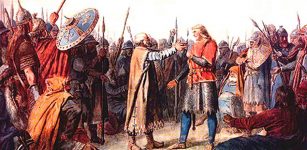 On This Day In History: Battle Of Svolder One Of Greatest Battles of Viking Scandinavia Was Fought – On Sep 9, 1000
News | Sep 9, 2016
On This Day In History: Battle Of Svolder One Of Greatest Battles of Viking Scandinavia Was Fought – On Sep 9, 1000
News | Sep 9, 2016 -
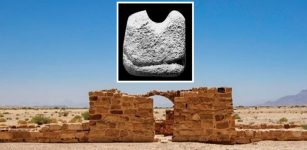 World’s Oldest Chess Piece Discovered At Humayma In Jordan?
Archaeology | Nov 26, 2019
World’s Oldest Chess Piece Discovered At Humayma In Jordan?
Archaeology | Nov 26, 2019 -
 Mystery Of The Lost Biblical City Of Ai – Where Was It Located?
Biblical Mysteries | Apr 23, 2017
Mystery Of The Lost Biblical City Of Ai – Where Was It Located?
Biblical Mysteries | Apr 23, 2017 -
 Sacred Healing Earth Of Chimayo And The Mysterious Black Christ Crucifix
Featured Stories | May 24, 2019
Sacred Healing Earth Of Chimayo And The Mysterious Black Christ Crucifix
Featured Stories | May 24, 2019 -
 Unique 8,400-Year-Old Burial Of A Dog Different From Modern Dogs Discovered In Sweden
Archaeology | Sep 25, 2020
Unique 8,400-Year-Old Burial Of A Dog Different From Modern Dogs Discovered In Sweden
Archaeology | Sep 25, 2020 -
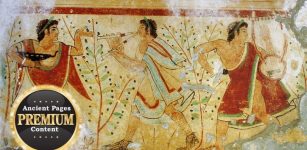 Intriguing Evidence Etruscans May Have Visited Canada
Civilizations | Sep 30, 2018
Intriguing Evidence Etruscans May Have Visited Canada
Civilizations | Sep 30, 2018 -
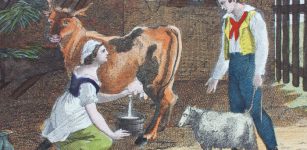 Drinking Milk Increased Ancient Human Body Size – New Study
Archaeology | Jan 18, 2023
Drinking Milk Increased Ancient Human Body Size – New Study
Archaeology | Jan 18, 2023 -
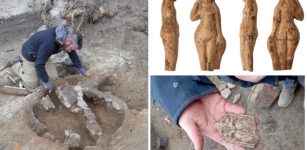 Ancient Roman Statues of Goddess Venus And Other Precious Artifacts Found In A Trash Pit In France
Archaeology | Apr 8, 2023
Ancient Roman Statues of Goddess Venus And Other Precious Artifacts Found In A Trash Pit In France
Archaeology | Apr 8, 2023 -
 DNA Unravels Mysteries Of The Crannogs, Ancient Artificial Islands Older Than Stonehenge
Archaeology | Oct 10, 2022
DNA Unravels Mysteries Of The Crannogs, Ancient Artificial Islands Older Than Stonehenge
Archaeology | Oct 10, 2022 -
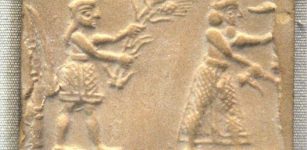 Who Was The Sumerian Ensi?
Featured Stories | Jan 24, 2020
Who Was The Sumerian Ensi?
Featured Stories | Jan 24, 2020 -
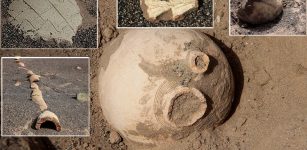 Ruins Of Ancient City Emerged From The Sand In Kerman Province, Iran
Archaeology | Apr 15, 2017
Ruins Of Ancient City Emerged From The Sand In Kerman Province, Iran
Archaeology | Apr 15, 2017 -
 History Of Jarlshof – Thousands Of Years Of History With Traces Of Picts, Vikings And Scots
Featured Stories | Jun 4, 2020
History Of Jarlshof – Thousands Of Years Of History With Traces Of Picts, Vikings And Scots
Featured Stories | Jun 4, 2020 -
 Skegriedösen (Skegrie Dolmen) – 5,000-Year-Old Stone Chamber Tomb In Southern Sweden
Featured Stories | Feb 11, 2023
Skegriedösen (Skegrie Dolmen) – 5,000-Year-Old Stone Chamber Tomb In Southern Sweden
Featured Stories | Feb 11, 2023 -
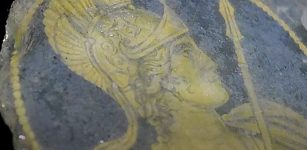 Extremely Rare Ancient Gold Glass With Goddess Roma Found During Subway Works In Rome
Archaeology | Feb 13, 2023
Extremely Rare Ancient Gold Glass With Goddess Roma Found During Subway Works In Rome
Archaeology | Feb 13, 2023 -
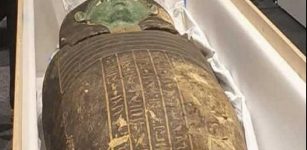 Egypt Recovers Ancient Wooden Coffin From Houston Museum In The US
Archaeology | Oct 4, 2022
Egypt Recovers Ancient Wooden Coffin From Houston Museum In The US
Archaeology | Oct 4, 2022 -
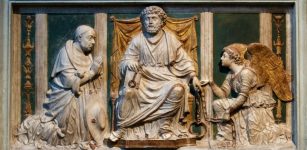 Nicholas Of Cusa – A Medieval Scholar And Mystic With Highly Unorthodox Ideas
Featured Stories | Aug 13, 2021
Nicholas Of Cusa – A Medieval Scholar And Mystic With Highly Unorthodox Ideas
Featured Stories | Aug 13, 2021 -
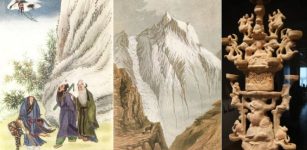 Kunlun Mountain – Mythical Dwelling Place Of Gods, Sacred Animals And Symbol Of Axis Mundi In Chinese Mythology
Chinese Mythology | Jan 31, 2019
Kunlun Mountain – Mythical Dwelling Place Of Gods, Sacred Animals And Symbol Of Axis Mundi In Chinese Mythology
Chinese Mythology | Jan 31, 2019



